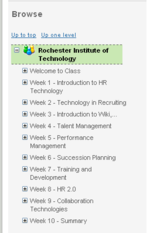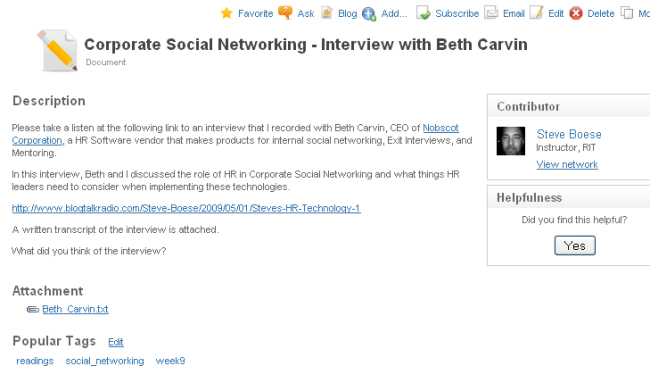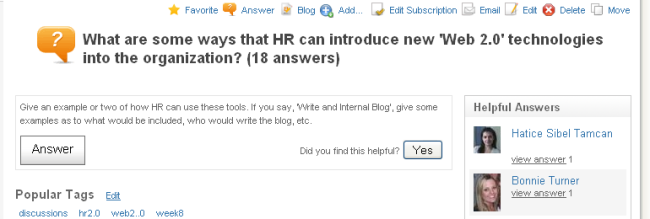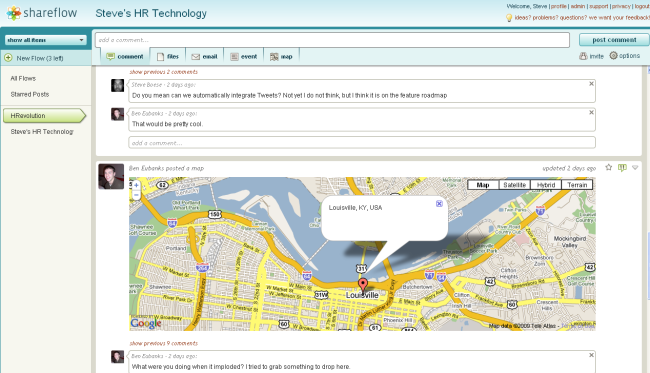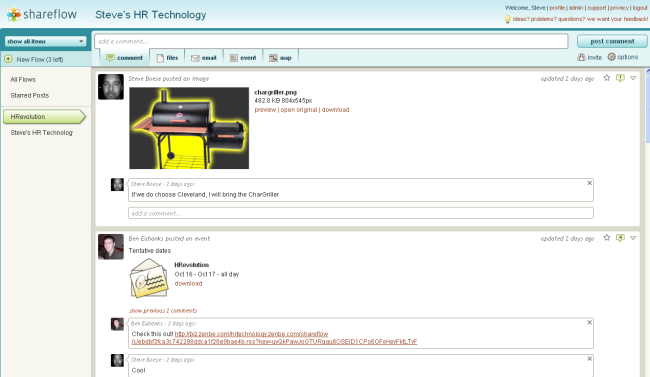Trust in Social Networks
I recently read a paper that studied a major organization's use of collaboration technologies (wikis, internal forums, and blogs) indicated the most commonly stated barrier to employee participation in knowledge sharing using online platforms is the fear that one's contributions were not going to be seen as relevant, important, or accurate.
If we accept that these fears are true barriers, then we must try and examine what causes them, and adopt strategies to mitigate them.
Why might an employee 'fear' contributing to an internal collaboration platform, or social network? Some potential reasons:
1. Confusion - I don't know what the heck to post on here anyway
2. Uncertainty - I'm not sure if this is even right information
3. Lack of confidence - I don't think anyone would care about this
4. Doubt - Can I even find important information here?
5. Pride - I really should know this answer myself, I can't ask such a dumb question
It seems that a lack of trust is the underlying cause of these issues. But there are really two kinds of trust that factor in here, and it is important to understand the difference.Flickr - Salty Grease
One - I trust that you know what you are talking about
When I read your posts, comments, and answers to submitted questions, I have belief in your expertise and authority. If I rely on your information to help make important decisions, I won't get burned.
Two - I trust that you won't make me look foolish for asking questions or posting information that is incorrect
Communities need a balance of those providing information with those seeking information. Seeking information in online collaboration platforms frequently involves explicit posting of questions, or leaving comments asking for more information or clarification on posted content. In an open, company-wide system this can certainly be intimidating for many employees that would prefer the 'protection' of phone calls or e-mails when seeking information.
Both types of trust have to be in place in an organization for a collaboration platform to take hold, grow, and thrive as an imortant resource.
So what steps can an organization take to help instill this trust, and enable participation in light of the barriers described above?
1. Confusion - I don't know what the heck to post on here anyway
Set some clear guidelines about what kinds of content are meant to be posted on the platform. Enlist some early 'power users' or champions to help seed content of the type and format that (at least initially) the platform is intended for. Be very firm and clear about what content the organization deems inappropriate for the platform.
2. Uncertainty - I'm not sure if this is even right information
Encourage employees to share first, and question themselves seconds. Let the community members themselves help guide newer, or less confident employees. An environment where members comment, modify, and otherwise help to shape content is the key. Give employees the freedom to contribute 'part' of the answer, and not feel pressure to know everything on given topic.
3. Lack of confidence - I don't think anyone would care about this
This is where a strong feedback loop inside the community is important. When it becomes a standard practice for others to comment on, enhance, and promote or rate contributions, you can start to mitigate the feeling of 'why would anyone care what I post'.
4. Doubt - Can I even find important information here?
Employees will only consult the community if they have success in finding either the information they seek directly, or a way to easily locate and connect with other members of the community likely to possess the needed expertise to help solve their issues.
5. Pride - I really should know this answer myself, I can't ask such a dumb question
Here is where Trust in the organization is really critical. Employees have to feel that content contributions can be made and questions asked in a 'safe' environment. That is not to say that incorrect or irrelevant information should be allowed to remain intact, but that criticism or comments be made in a positive and respectful manner. It is similar to a student that is reluctant to ask a question of the instructor in front of the entire class, but instead approaches the instructor privately, after class to ask the question. Sure, the student may feel more comfortable, but the rest of the students do not get the benefit of both the question and the answer. Better still, one of the other students may have had the answer for her in the first place.
In conclusion, organizations considering adopting tools for collaboration, or evaluating why their current projects are stagnant, need to take a very close look at these barriers to participation to see if they are present. Selecting and deploying a tool is part of the solution, but creating and supporting an open, trusting environment to ensure its success is another matter entirely.
What methods might an organization use to encourage open participation in online employee communities?

 Steve
Steve

